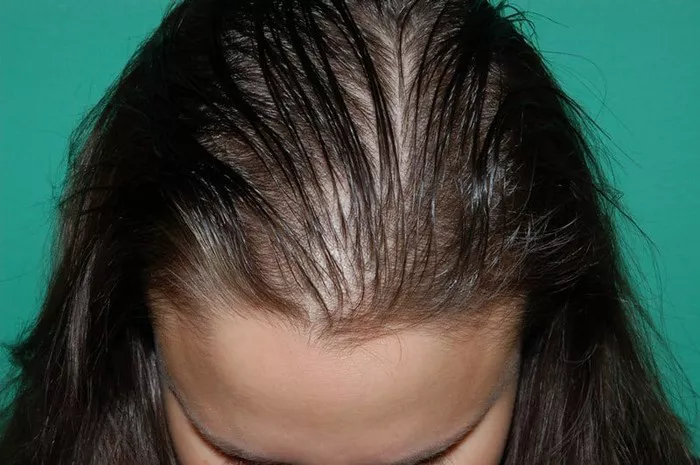Thinning hair is a common concern for both men and women, and it can be a source of frustration and self-consciousness. While some degree of hair loss is natural as we age, there are steps you can take to slow down or even reverse the thinning process. In this article, we’ll explore the causes of thinning hair and provide practical tips and strategies to help you maintain a healthy, full head of hair.
Understanding the Causes of Thinning Hair
Before diving into solutions, it’s essential to understand the underlying causes of thinning hair. Several factors can contribute to hair loss, including:
1. Genetics: One of the most significant factors in determining whether you’ll experience thinning hair is your genetic makeup. If you have a family history of baldness or thinning hair, you’re more likely to experience it yourself.
2. Hormonal Changes: Hormonal imbalances, such as those that occur during pregnancy, childbirth, menopause, or thyroid disorders, can lead to hair loss.
3. Medical Conditions: Certain medical conditions, such as alopecia areata, scalp infections, and autoimmune diseases, can cause hair loss.
4. Stress: Chronic stress can disrupt the hair growth cycle, leading to increased shedding and thinning.
5. Nutritional Deficiencies: A lack of essential vitamins and minerals, such as iron, zinc, and biotin, can contribute to hair loss.
6. Environmental Factors: Exposure to harsh chemicals, pollutants, and UV radiation can damage the hair follicles and lead to thinning.
Strategies to Stop Thinning Hair
While some causes of thinning hair, such as genetics, cannot be changed, there are several strategies you can implement to slow down the process and promote healthy hair growth:
1. Maintain a Balanced Diet: Eating a nutritious diet rich in vitamins, minerals, and protein is essential for healthy hair growth. Incorporate foods such as fruits, vegetables, lean proteins, and whole grains into your meals to support hair health.
2. Stay Hydrated: Drinking an adequate amount of water is crucial for maintaining hydrated and healthy hair follicles. Aim to drink at least eight glasses of water per day to keep your hair and scalp hydrated.
3. Manage Stress: Finding healthy ways to manage stress, such as practicing mindfulness, meditation, or yoga, can help reduce hair loss caused by chronic stress.
4. Avoid Harsh Chemicals: Limit your use of harsh hair products, such as dyes, bleaches, and styling products containing alcohol, which can damage the hair follicles and lead to thinning.
5. Protect Your Hair: Minimize heat styling and use heat protectant products when using hot tools. Additionally, wear a hat or scarf to protect your hair from the sun’s harmful UV rays.
6. Use Gentle Hair Care Products: Choose shampoos and conditioners formulated for your hair type and avoid overwashing, which can strip the hair of its natural oils and lead to dryness and breakage.
7. Consider Supplements: If you suspect you have nutritional deficiencies contributing to your hair loss, consider taking supplements such as biotin, iron, and zinc after consulting with a healthcare professional.
8. Seek Professional Help: If you’re experiencing significant hair loss or thinning, consult with a dermatologist or trichologist to determine the underlying cause and explore treatment options.
Treatment Options for Thinning Hair
In addition to lifestyle changes and preventive measures, there are several treatment options available for individuals experiencing thinning hair:
1. Topical Treatments: Over-the-counter and prescription topical treatments, such as minoxidil (Rogaine), can help stimulate hair growth and prevent further thinning.
2. Prescription Medications: Finasteride (Propecia), a prescription medication, is FDA-approved for the treatment of male pattern baldness and can help slow down hair loss and promote regrowth.
3. Hair Transplant Surgery: For individuals with more advanced hair loss, hair transplant surgery can be a viable option. During this procedure, hair follicles are transplanted from areas of the scalp with thicker hair to areas experiencing thinning or baldness.
4. Platelet-Rich Plasma (PRP) Therapy: PRP therapy involves injecting platelet-rich plasma from your blood into the scalp to stimulate hair growth. While research on its effectiveness is still ongoing, some studies have shown promising results.
5. Low-Level Laser Therapy (LLLT): LLLT devices, such as laser combs or helmets, emit low-level laser light to stimulate hair follicles and promote hair growth. These devices can be used at home and may help improve the thickness and density of the hair.
Conclusion
Thinning hair can be a distressing issue for many individuals, but it’s essential to remember that you’re not alone, and there are steps you can take to address the problem. By understanding the underlying causes of thinning hair and implementing preventive measures such as maintaining a balanced diet, managing stress, and avoiding harsh chemicals, you can promote healthy hair growth and minimize further thinning. Additionally, exploring treatment options such as topical treatments, prescription medications, and hair transplant surgery can help you regain confidence and achieve a fuller head of hair. Remember to consult with a healthcare professional or dermatologist to determine the most suitable approach for your individual needs. With patience, persistence, and the right resources, you can stop thinning hair and enjoy healthy, vibrant locks once again.


